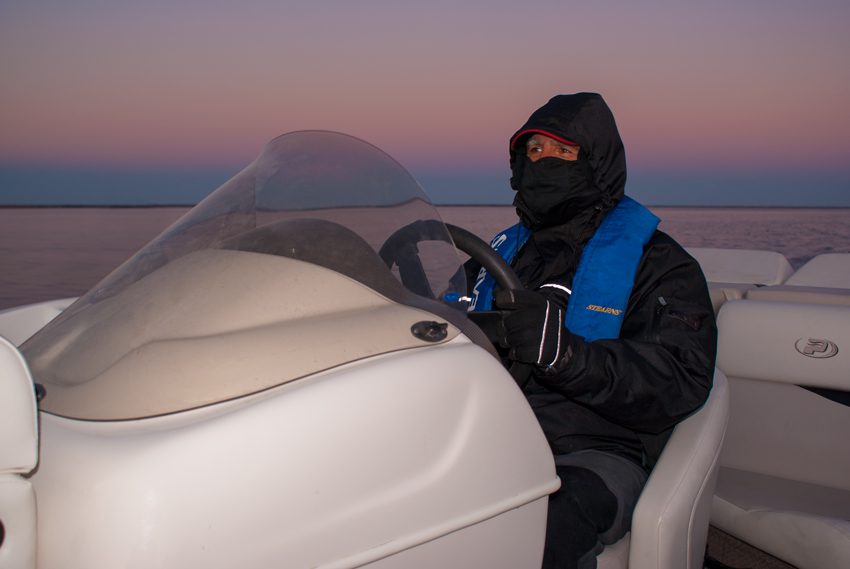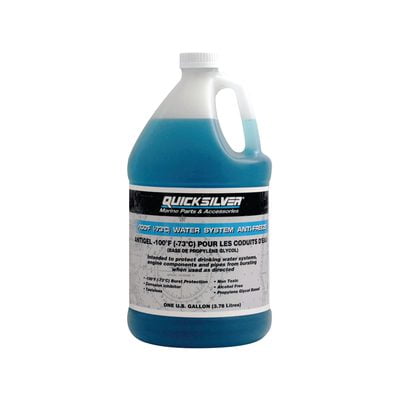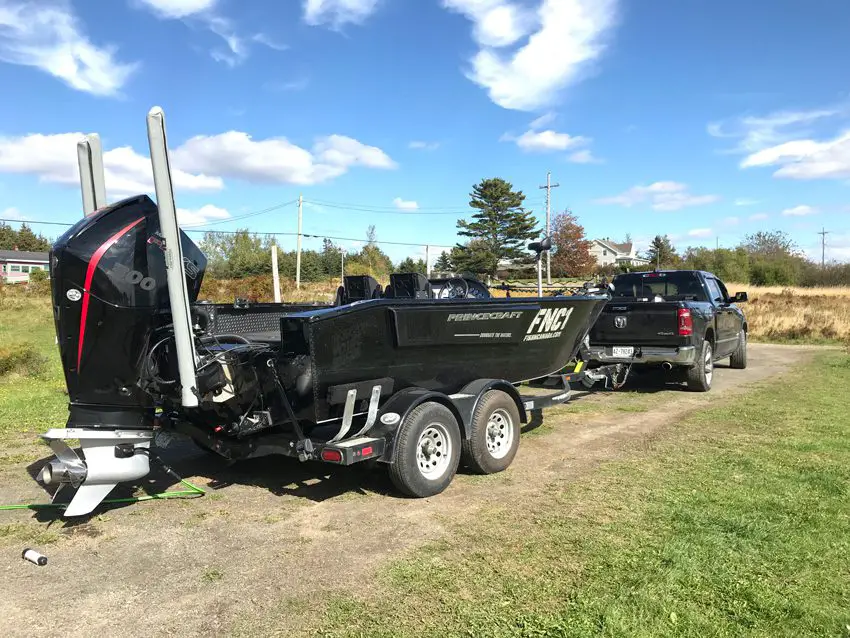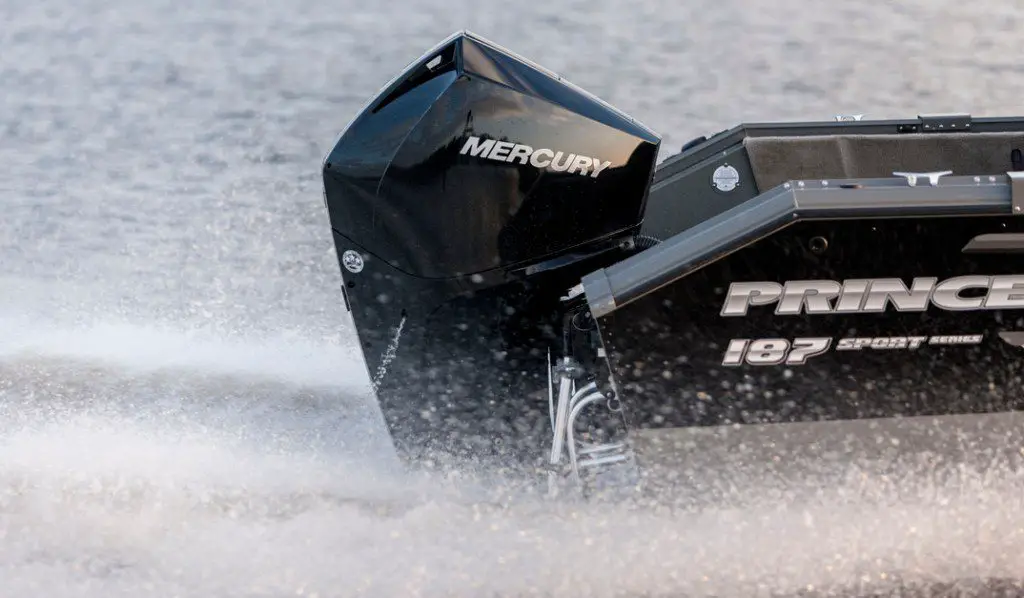Sponsored by Princecraft
As of this writing in early November, many people are now in that “shutting down” mode of the fishing season. Some like to push it until the ice skims over while others like to keep ahead of the frozen curve. Either way, eventually your fishing rig needs to be prepped for the long cold months ahead.
Here are some steps to follow when you decide to winterize your Princecraft boat and Mercury motor this season.
The Boat

01 – Drain All Water

This sounds simple but you wouldn’t believe the little areas that water can sit for months in.
Trim your motor all the way down and let all sitting water drain out.
Also, it’s a good idea to make sure the bilge, livewells, pumps, etc are all free of water.
A great idea is to run a non-toxic antifreeze like Quicksilver Water System Antifreeze into your livewell systems and pump it through the circulation process. Nothing will freeze up and it is safe for the environment!
Equally as important is draining all the water out of your engine. Leave it trimmed completely down. The water will go to the lowest point, so make sure that is the ground and not inside the base of your motor.
02 – Fill Gas Tank And Add Stabilizer
You should always store your fishing boat with a full tank(s) of premium high octane fuel. Always add a brand name marine stabilizer as well. Run your motor with earmuffs on at a boat launch to circulate the fuel
03 – Clean out your fishing gear

Fishing gear, and other valuable items, should always be cleared out of the boat before sending it into storage. No sense in letting mother nature rust away your lifetime of accumulated fishing gear.
As well, if you are storing your rig outside, all it takes is a quick stroke of a knife and a thief can have-at-er’ in no time. Also, make sure your rig is insured throughout your storage time.
04 – Pull your batteries
If you are storing your rig outside, put your batteries in an area with “room temperature” and try not to set them down on concrete. Cold air and cool, damp surfaces such as concrete can significantly reduce the lifespan of your battery and can even kill them completely if freezing occurs. To create a bit of separation, a small piece(s) of wood is perfect. Make sure they are fully charged before storing and top them up once or twice throughout storage.
If your boat is stored inside and you have a quality built-in charger, then run a trickle charge throughout storage (make sure your charger is compatible)
05 – Shine up and cover up

Give your baby a final cleaning at either a carwash or even with a good degreaser in your driveway. Indoor storage is always best, however, shrink wrapping boats is a fantastic way to leave your rig outside.
The Motor

06 – 4-Stroke Motors: Replace engine oil
Make this your first step when winterizing your Mercury motor since you want to try to do it after the engine was running for a bit to help flush out the old oil. This step should always be done before the winter and not in the spring. This may be a step for a marina (as with many here) if you are not comfortable with it. Fresh oil is happy oil.
07 – Fog your motor
If you know how to do this or are quite a handy person, this step is quite easy. That said, if you are at all intimidated then let a marine mechanic do this for you. Fogging spray protects internal engine parts with a layer of anti-corrosive compound and is essential to maintaining the health of your motor.
08 – Change your engine’s fuel filters
This is also the stage where you will want to change any fuel/water separators in the system. Usually, the part numbers are on the filters. Again, only do this if you feel comfortable.
09 – Replace your lower unit’s gear oil.
This is an easy one to do and you should give it a go if you have never tried it. Drain the lower unit of old gear oil and replace it with new oil. Be sure to check for moisture. If water comes out first, or if you see milky-looking oil, this is an indication your boat is experiencing a moisture leak and will need new seals before next season. That is most definitely a marine mechanic’s job.
Here’s a note from the Mercury Marine website:
Inspect gear lubricant for metal particles (lubricant will have a ‘metal flake’ appearance). Drain lube into a clean pan/container. The presence of fine metal particles (resembling powder) in the gear lube indicates normal wear. The presence of metal chips in the gear lube indicates the need for gear housing disassembly and component inspection by an authorized dealer.
Note the color of the gear lubricant when draining. If the color is white or cream it MAY indicate the presence of water in lubricant. Gear lubricant which has been drained from a gear case recently in operation will have a yellowish color due to lubricant agitation/aeration. Gear lube which is mixed with assembly lubricant (Special Lube 101 or 2-4-C) will also be creamy white in color. This is normal and should not be confused with the presence of water. If water is suspected to be present in the gearcase, a pressure check of the gearcase should be completed by an authorized dealer. Pouring a portion of the gear lubricant into a glass jar and allowing the lubricant to settle will allow any water in the lube to separate and settle to the bottom of the jar.
The presence of water in gear lubricant indicates the need for inspection by an authorized dealer. The dealer will disassemble the gear housing and inspect the oil seals, seal surfaces, O-rings, water pump gaskets, as well as the gear housing components for damage.

10 – Grease your outboard’s fittings
Finally, look for your engine’s grease fittings which are usually found in the steering mechanism area. Use quality marine grease to protect against rust, corrosion, and oxidation. Take a look at your owner’s manual to see if you’ve missed any.
Conclusion
Treat your rig with the respect it deserves. If your fishing areas are iced over, it’s time to put your pride and joy to rest.
Remember though, a little cold weather won’t hurt a fishing rig whatsoever. As you can see in our feature image here, a late fall to early winter snowfall is pretty much the same as a summer downpour. It is just moisture. So long as things stay above the freezing point, and the fish are biting, boats can be used.
See you in the spring with your rip, roaring, ready rig!
